Subtotal: 11,375CFA
Reishi Ganoderma Lucidum
1 in stock
- Delays the degeneration process and enhances overall vitality.
- Improves blood circulation.
- Reduces stiffness in joints and relaxes tense muscles.
- Reishi is beneficial to the joints, increases vital energy, strengthens tendons and bones
- Relieves the symptoms of lack of energy, stress, exhaustion, strain and short-term insomnia.
>>>Read More
27,225CFA
1 in stock
GANODERMA / REISHI MUSHROOM
Rated as Number one of the superior herbs Elixir of Immortality
Benefits:
- Delays the degeneration process and enhances overall vitality.
- Improves blood circulation.
- Reduces stiffness in joints and relaxes tense muscles. Reishi is beneficial to the joints, increases vital energy, strengthens tendons and bones
- Relieves the symptoms of lack of energy, stress, exhaustion, strain and short-term insomnia.
- Regulates asthmatic and respiratory disorders.
- Improves memory, thinking ability and prevents forgetfulness.
- Reishi has anticancer effects. It reduces the side effects of the chemotherapy and stimulates the joint benefits of other drugs; inhibits thrombogenesis and Iyses thrombi on the wall of surrounding cells tissue and removes blockade of cancer medication, thus increases the effectiveness of these drugs
- Reishi has analgesic effects.
- Reishi is a nerve tonic.
- Reishii has anti-allergy effect – suppresses the over active allergen production, inhibits histamine release;
- It efficiently eliminates cholesterol in the blood and the amount of free fat, reducing the cholesterol levels;
- It stabilizes blood pressures and promotes blood circulation; has the ability to improve the diastolic level which is by far most valuable property; increases the blood flow of coronary artery; lowers the side effects of antihypertensive drugs;
- Reishi has anti-aging effects.
- Reishi has anti-diabetes effects. It adjusts the insulin sensitivity, reduces blood sugar level and restores pancreas functions.
- Reishi has is an immune modulatory and anti-HIV activity. It elevates the natural healing ability of the body allowing the body to establish a strong immune system. It has a cytopathic effect and inhibits HIV-1 PR enzyme.
- Liver protection – It lowers the GOT and GPT levels, improves the function of the liver in chronic hepatitis.
- Thromboses prevention – It inhibits platelet aggregation due to its natural anticoagulant properties.
- Reishi improves leukocytopenia and the reticuloendothelial system.
- Reishi adjusts the immune system to prevent viral diseases.
- Reishi protects and detoxifies the liver.
- Reishi prevents and cures heart diseases.
- Reishi has a positive effect on insomnia.
- Reishi lowers blood pressure
Official Latin Name: Ganoderma lucidum
Part of the scientific word for Reishi is lucidum which means “shiny” or ” glossy ” and refers to the cap’s surface beautifully glazed effect.
Internationally this incredible mushroom is known by its Japanese name, Reishi. The Chinese name Ling Zhi translates as the “Herb of Spiritual Potency” and was highly prized as an “Elixir of Immortality” as it was believed to bring eternal youth and longevity.
The 2200 years old scripture “The Shen Nong Ben Cao Jing” (known in Japan as “Shinnoh Honsohkyo”) is considered today the oldest book on oriental herbal medicine that offers the classification of 365 species of roots, grass, woods, furs, animals and stones in three categories. The medicines are basically classified into 3 categories: 120 of them are declared to be “superior” medicines, another 120 are classified as “average” medicines, and the remaining 125 are placed in the “fair” category. The “average” category medicines are those, which can be taken as a tonic, and those in the “fair” category are taken to remedy specific ailments.
The “superior” medicines are called “God’s Herbs” and they are for perpetual youth and longevity. These are herbs that are effective for multiple diseases and mostly responsible for maintaining and restoring the body balance. They have no unfavourable side effects. Reishi is ranked number one of the superior medicines.
Reishi (Ganoderma lucidum) has been used for more than 4000 years in Traditional Medicine in the entire Orient and it is believed to be the oldest mushroom used in medicine. It is known as the most highly praised ancient medicine and it is undoubtedly one of the most respected medicinal mushrooms of modern times.
Reishi grows wild on decaying logs in Japan, China, Taiwan, Korea and the rest of the costal regions of the Far East in densely wooded mountains with high humidity and dim light. 99% of Reishi growing in the wild in Japan are found on old stumps of plum trees. In ancient times people had to go high up on the mountains and deep into the forests to harvest this most valuable medicine.
Reishi Mushroom is also known by the name Lucky Fungus. Wild Reishi Mushrooms are scarce. Out of 10,000 aged trees, perhaps 2 or 3 would have Reishi grow. The spores of this fan shaped mushroom have such a tough outer husks that makes the germination extremely difficult and these accounts for its rarity. In the old days when one discovered Reishi, its location had to be kept a secret even from one’s closest relative as a precious possession.
The cultivating process is extremely hard making Reishi an expensive fungus. The hard texture makes Reishi an inedible mushroom, but it is suitable as tea or extract. Reishi has a large, tough and thick woody body with no gills but instead pores that release their seeds (spores). All six varieties of this mushroom are in fact one species that under different environmental conditions display the six colours in full splendour – yellow (Kishiba), black (Kuroshiba), purple (Murasakishiba), blue (Aoshiba), red (Akashiba) and white (Shiroshiba). Each has been classified in the “Shinnoh Honshokyo” and in the catalogue of herbs written in the Ming Dynasty (1368-1644 A.D.). The red variety is the most commonly used and commercially cultivated.
Reishi Mushroom is also known by the name Lucky Fungus. In the Taoist tradition, Reishi is said to enhance spiritual receptivity. Monks used it to calm the spirit and mind. It is also considered a symbol of feminine sexual. It is also considered a symbol of feminine sexuality as it refines the beauty and complexion. Reishi has been used in traditional oriental medicine for more than 4,000 years to treat liver disorders, hypertension, fortify the bones and tendons, diminish the nervous tension, treat the general fatigue and weakness, arthritis, deafness and other ailments.
The numerous studies and observations prove that Reishi has multiple benefits in a very wide range of diseases and symptoms, shows no side effects and can be consumed in high dosages and in combination with other medications.
In ancient time, Reishi in medicine was considered so auspicious that its medical efficacy has been attested to in the oldest Chinese medical text (presumed to be over 2,000 years oldYou can see how important and powerful Reishi was considered in ancient times. It achieved its ranking in the Chinese text not because of its symbolic importance as a good omen but because of its medicinal properties. Centuries ago, Reishi was said to be a medicine that would grant you eternal youth and longevity. But after 2,000 years, Reishi has jumped into the spotlight as a specific medicine for cancer. This must be a better irony for those in the modern medical profession who discounted the herbal remedies of Oriental medicine as being ” old wives’ tales”. The families of many cancer patients who have received a diagnostic “death sentence” now seek Reishi as the only way left for them.
Active ingredients
Polysaccharides (Ganoderic acids A, B, C and D), Triterpenoids, Lucidenic acid B, Danodermanontriol, Ergosteroids, Complete proteins, Coumarin, Mannitol, Lactones, Alkaloids, Steroids, Nucleotides and Lastan.
Applications
Anti-tumor effect Cancer Treatment Plaque Build-Up Contact Dermatitis Chronic Hepatitis Neuroses Myopathy Allergic Rhinitis Hypothyroidism Phlebitis Fatty liver Tooth-infection | Debility Liver failure Cholesterosis Asthma Conjunctivitis Insomnia Anorexia Neuroses Rheumatism Prostate health Bladder infection | General anxiety High Blood Pressure Inhibit Platelet Aggregation Immune Dysfunction Syndromes Chronic Fatigue Syndrome Alzheimer’s Disease Altitude sickness Chronic bronchitis Typical dermatitis Allergic sinusitis | Stress Hemorrhoids Gastrits Sarcoma 180 Obesity Stroke Chronic nephritis Artriosclerosis Menopausal problems Coronary insufficiency Myocardial infarction Cerebrovascular accident |
Anti-tumour effect / Adjunct cancer therapy
The anti-cancer agents in Ganoderma are the polysaccharides and Germanium. The polyshaccharide fraction (Beta-D-glucan) of Ganoderma is largely responsible for its anti-tumor efficacy. Beta-D-glucan is a huge sugar molecule made up of many little sugar molecules chained together bound to amino acids. These intricate sugars stimulate or modulate the immune system by activating immune cells such as macrophage and helper T-cells, as well as increase the immunoglobin levels (immunoglobins are specific types of antibodies) to produce a heightened response to foreign cells, whether bacteria, viruses, or tumor cells.
Ganoderma can be used as a supplement during chemotherapy or radiotherapy to reduce side effects such as fatigue, loss of appetite, hair loss, bone marrow suppression and risk of infection. It can also reduce the toxic and side effects and mitigate the pains during chemotherapy and radiotherapy, in particular to cancer patients at terminal stages for prolonging their lives and improving their living quality. Reishi is also an effective cancer preventive.
- Reishi boosts the immune system and promotes interferon activity.
- It stimulates the cancer cell apoptosis and has cytotoxic effects.
- It reinforces the membrane of the cancerous cells to prevent from spreading (metastasis).
- Reishi mushroom has strong immune stimulating properties due to the fact that it contains a high amount of polysaccharides that are essential for proper functioning of the immune system.
- Ganoderma works in the treatment of cancer because it helps cleanse the body from toxins. It enhances liver detoxification, thus improving liver function and stimulating the regeneration of liver cells – making it a very important supplement for those who have liver cancer.
- Joint usage with other anti-tumor drugs, chemotherapy and radiotherapy diminishes their side effects and heightens their effect, normalizes the overall body system thus decreases further health complications, prolongs survival and minimize metastasis, improves quality of life, and prevents occurrence or recurrence.
- It also prevents thrombi formation aiding in fusion of medications within the system.
Scar tissues surrounding cancerous cells cause continuous infection. The permanent thrombi formed serve to isolate the diseased area. In this respect, thrombi become an aid in arresting the spread of diseased cells. On the other hand, medication is unable to act on the disease area due to the thrombi barrier. Anticoagulant is employed to dissolve this build-up and to inhibit further platelet bonding. Such treatment carries a high risk since patient now has no defense against bleeding. Reishi’s ability to inhibit thrombi formation with none of the side effects of modern medication proves to be invaluable contribution in the fight against cancer.
Following the increases in cancerous cells, some of the thrombi multiples are carried to other parts of the system, e.g. phlebitis and spontaneous bruises are caused by clogged blood vessels. Arteriosclerosis is the more fatal system of such blockage. Cerebrum and coronary arterial block lead to stroke, cerebral vascular accident, myocardial infarction etc. In fact, cancer patients die more frequently from related complications than the disease itself. Reishi’s ability to prevent thrombi formation indirectly plays a significant role in preventing such medical complications.
The Japanese Government states the following: THE JAPANESE MEDICAL FIELD HAS CONFIRMED THAT REISHI HAS POSITIVE EFFICACY and officially lists REISHI as a substance for treating cancer.
Immune system
Ganoderma Lucidum contains high concentration of Organic Germanium, Polysaccharides and Triterpenes. These active components are proven to strengthen our immunity cells and improve our immune system.
Nerves tonic
Chinese and Japanese herbalists have traditionally recommended Reishi mushrooms for insomnia due to their “sleep-promoting factor”. Long-term use causes a significant promotion of slow wave sleep1. Reishi mushrooms are prescribed in China for a number of psychiatric and neurological afflictions, including diseases involving the muscles, anorexia, and debility following lengthy illnesses.
In Japan, the dried “mycelium” of Reishi the root-like body that produces mushrooms has been found to be highly effective in the treatment of neuroses caused by “environmental stress”.
In addition, in an eight-month study of Alzheimer’s disease, patients taking a Reishi mycelium product demonstrated significant improvement.
In China, Reishi is used for its muscle relaxing and analgesic (pain-inhibiting) effects. In one study,
Reishi alleviated anxiety in 18 of 20 patients after four months’ use. It was concluded that the mushroom has an essentially “calmative function”, but is neither a narcotic nor a hypnotic.
Cholesterol
With the build up of protein or fatty acids in the blood stream the level of cholesterol rises up to 300 mg/dl (normal level is between 130 and 230 mg/dl and the protein level showing over 1000 mg/dl (normal level being 230 – 500 mg/dl). In the cases of high level of cholesterol, the viscosity of blood becomes thick and the heart muscle has to pump harder to transport blood especially to the extremities. This increases the heart load and elevates the blood pressure; it increases both the systolic and diastolic measures.
It slows down the function of circulatory system resulting in stiffness of the joints and shoulders, insomnia, anxiety attacks, dizziness, fatigue and in no time this can lead to arteriosclerosis which is linked to hypertension, stroke, cardiac attacks, obesity, lung and liver diseases etc.
The function of blood is to transport oxygen and nutrients to various parts of the body. Capillaries carry out this function. These minute vessels are about 1% the thickness of human hair. When cholesterosis occurs, blood viscosity becomes too thick for fluid circulation. Nutrients cannot reach the extremities as easily as when under normal conditions. Immunity decreases following the decrease in nutrient supply especially in the extremities. Simultaneously, the circulatory system carries waste products from all parts of the body via the veins to the liver and kidney to be expelled from the system as faeces and urine. Pigmented splotches showed up on facial skin if any melanin substance settled due to waste accumulation in a slowed circulation cycle.
Areas like the face, eyes, bones marrow etc. have high capillaries concentration. Decrease in blood circulation leads to like lost of skin lustre and texture, appearance of wrinkles and freckles etc. Improving blood circulation can rectify these problems. This is achieved when blood viscosity is kept normal by reducing cholesterol built-up. Anticoagulants are employed for such a purpose and Reishi is a natural anticoagulant.
Reishi plays a role in controlling thrombosis and cholesterol in the blood streams, and facilitating circulation simultaneously. These together discourage formation of fatty liver.
Reishi contains triterpenes, which lower cholesterol. A large Reishi study in China found that low-density lipoprotein (LDL the harmful cholesterol) levels dropped in 68% of 90 patients following only one to four months of Reishi use.
Blood pressure regulator
According to the statistics set by the World Health Organization (WHO), blood pressure exceeding 139 (systolic pressure) and over 89 (diastolic pressure) is rated high; systolic pressure of readings below 100 is rated low. Systolic pressure is the measure of highest pressure during a heartbeat cycle; this is the contracting force employed by heart muscle to deliver blood to its surrounding veins. Diastolic pressure is the measure of the expanding force of the heart muscle at which point-surrounding veins received the least pressure. A high diastolic generally carries more risks, it indicates loss of elasticity in the veins. When blood vessels are obstructed, excessive pressure exerts on its walls. These repeated expansions weaken the structure sometimes to the breaking point.
Modern medication has trouble matching Reishi’s effectiveness in reducing systolic pressure but more important is its ability to raise low diastolic pressure that indicates the recovery of blood viscosity and vessel elasticity.
For centuries, Reishi has been known as a cardiotonic herb. It was prescribed routinely to those with “knotted and tight chest” symptoms consistent with both stress and/or coronary artery disease-related angina. Researchers in China found that Reishi improved the blood flow and lowered oxygen consumption in the heart muscle. Similar results were also found by Japanese scientists. They found that Reishi contains ganoderic acids (which belong to a group of natural substances called “triterpenes”) which lower high blood pressure, lower cholesterol, and inhibit platelet aggregation (the clumping together of blood cells), which can lead to heart attacks and other circulation problems.
One clinical test involving mice with hereditary hypertension and frequent incidences of brain hemorrhage were given a Reishi preparation daily (concentration of 100 mg/Kg) for 2-week period. The other group did not receive Reishi treatment. Blood pressure measurements were tabulated. There was a rapid decrease immediately following Reishi administration in the initial 5 hours. Then it gradually tapered and steadied for the next 14 days. Total decrease is 20%. This shows Reishi’s efficacy in controlling hypertension and related problems. No modern medication up to this date has satisfactorily achieved this.
In a six-month clinical trial performed in a university hospital in Tokyo, nearly half (47.5%) of 53 hypertensive patients lowered their blood pressure by 10-19 mmHg, and 10% of the subjects dropped their pressures 20-29 mmHg (both systolic and diastolic readings) after taking Reishi extract. Similar results were observed in a Chinese clinical trial without any side effects. Recently, Russian scientists have taken an interest in Reishi.
They found that in addition to all the cardiovascular benefits mentioned above, Reishi showed a significant preventive and therapeutic action against plaque build-up (“plaque” is a fatty goo which is comprised of a combination of oxidized cholesterol, calcium, and degenerated white blood cells [“foam cells”]. It is deposited on the walls of arteries, which restricts blood flow by narrowing the passage within arteries resulting in atherosclerosis).
Anti-Allergic /Anti-Inflammatory Actions
When foreign matter enters the body system, it activates the natural defense mechanism. A substance termed antibodies is released. They engulf and expel the offending matters. Under normal conditions, the amount of antibodies is proportional to the degree of damage. Allergy occurs when an overabundance of antibodies flood the system attacking both foreign and own tissue matters. The antibodies now act as toxins destroying body tissues. Symptoms of allergy include: itching, hives, difficulty in breathing etc. Allergen suppressing injections and medications are found to have only short-term effect. For permanent and complete erasure of the symptoms, intrinsic irritant has to be removed from the system.
LANOSTAN found in Reishi can inhibit overzealous allergen production. Further research is being conducted at this time to map out its chemical constructions.
Chronic bronchitis, asthma, typical dermatitis, allergic maxillary, sinusitis, chronic hepatitis, chronic nephritis etc. are the difficult to treat. They are allergy-related one way or another and are generally treated by cortisone, a substance that is naturally produced in the body. If this substance is artificially introduced to the system continuously, auxiliary kidney’s functions are replaced and the organ atrophies.
Side effects of a non-functioning auxiliary kidney include: swollen face (moon face), enlarged neck and swollen shoulders (buffalo neck). Discontinued use of cortisone eliminates the side effects but triggers fatal conditions like cardiac attack. Up to now, no better solution has been found. Cortisone treatment continues in spite of its known undesirable side effects. However, when Reich is employed as treatment for allergy-related illnesses, the efficacy is gradual but pronounced. Reich works by nourishing and rebuilding the organ itself thus improving the function of immunity regulation. This process is gradual but reliable and produces no harmful side effects. Nowadays, allergy-related problems like bronchitis asthma, rhinitis etc. are common but medical science have yet to come up with a definite cure. Regulating one’s diet and supplementing it with Reishi has proven to be the most effective treatment.
During the 1970s and 1980s, Reishi’s anti-allergy action became the subject of ongoing research in both China and Japan. Studies showed that Reishi extract significantly inhibited all four types of allergic reactions, including positive effects against asthma and contact dermatitis. In 1990, researchers at the University of Texas Health Science Center in San Antonio found that Reishi could be effectively used in treating stiff necks, stiff shoulders, conjunctivitis (inflammation of the fine membrane lining the eye and eyelids), bronchitis, rheumatism, and improving “competence” of the immune system without any significant side-effects.
Healing the Liver
Reishi is commonly prescribed in China for the treatment of chronic hepatitis. In treatments lasting 2 to 15 weeks, the overall rate of efficiency was 70.7 to 98.0%. In Japan, Reishi extract has been reported to be effective in treating patients with liver failure. In animal studies of mice with carbon tetrachloride-induced hepatitis, continuous dosing with Reishi tincture significantly inhibited the extent of liver damage, and the regeneration of the liver was promoted.
Reishi Prevents Phlebitis and Thrombosis
Thrombi (blood clots) are directly responsible for problems like stroke, aneurysm, myocardial failure etc. Thromboses veins deter blood circulation, decreasing supply to the extremities. This causes inflammation and gangrene to these parts. Other related problems are fatal e.g. hepatitis, nephritis, acute diabetes, cancer etc. Analysis of blood reveals that it is composed mainly of red and white corpuscles; it also consists of a spherical component with diameter of 2.5 u called platelets. These are the primary blood clotting agents. Clotting is achieved when platelets accumulate at the wound site to stop out-flowing of blood and this bonding effect facilitates in tissue repair. After repair is completed, platelets are unbounded and flushed into the blood stream. But sometimes incomplete unbonding occurs and the larger fragments blocked the blood vessels. Further complication arises if the blood vessel is already clogged by cholesterol and snowballing of this combination results in complete arterial block.
Only mammals in the advanced evolution stage possess the blood clotting mechanism. When the delicate balance of bonding and unbonding is upset, artery blockage of excessive bleeding occurs; therefore, it is important to keep this balance steady and constant. In the case of major injury, the wound site is wide and platelets accumulation rate falls behind that of the bleeding resulting in massive blood loss. Phlebitis causes the blood vessels to rupture at various sections and intervals. As a result, platelets accumulation cannot react effectively thus leading again to arterial blockage. The causes of phlebitis vary from contamination of toxic-by-products, adverse metabolic process from excessive consumption of meats and proteins, infections in other parts of the system (liver, joints etc.). These all contribute to blood vessels damage one way or another. When compounded by allergic reaction, over-stimulating platelet bonding again results in arterial blockage.
One clinical test involved mice with cholesterosis that were predisposed to arterial blockages. Experimental data showed that Reishi had inhibited excessive platelet accumulation, reinforced outer membranes of the red corpuscles and no harmful side effect was reported. Incidence of phlebitis decreased regardless of where the arteries were situated and overall strengthening was found.
Diabetes
Clinical tests show that administering Reishi instead of insulin can reverse blood sugar level back to normal after one year. Medical complications associated with diabetes also disappear. This is due to the fact that in 1984, Dr. Komota of Tokyo Medical & Dental University, Japan, isolated the substance GANODELAN A and B from extracts of Reishi that are responsible for blood sugar maintenance.
Long-term use of this incredible mushroom has significant effect on diabetes.
Experiments done on white mice found Ganodelan A & B to be responsible for lowering blood sugar content. When it is injected into test subjects’ abdominal cavity (concentration of 30 mg/Kg), analysis of samples 7 hours later found blood sugar level to drop 59% – 86%.
Prevention of disease / longevity / Adaptogene
The Royal Medical Society of Russia, Australia and England developed a new medical concept of ADAPTOGEN, a substance that is non-toxic (has no harmful side-effects), not limited to special organs or tissues, and has overall normalizing effect.
Patients suffering from the side effects of drugs such as antibiotics, hormonal supplements etc often acquire other related illnesses. This problem is under serious debate by the medical profession since 1965 and Reishi benefits these patients greatly.
Reishi, this amazing “Mushroom of Immortality”, is fast becoming known as one of the leading adaptogens used as a preventive medicine normalizing the body functions with no side effects, boosting the bodies’ defenses and contributing to overall vitality.
Reishi is best used in disease prevention measures. When in a healthy state, the use of this miraculous mushroom will maintain the body’s immunity system and have the vitalizing effect. The continuous use of Reishi will help prevent degeneration of your body, improve your health and attain longevity.
Reishi is recommended as preventive measure rather than a cure and the best solution to modern day symptoms and illnesses such as diabetes, asthma, cancer, arthritis, arteriosclerosis, immune deficiency, fatigue, high blood pressure, stomach and liver disorders, nervousness, stress, insomnia and others.
Regular intake of Reishi will not only help to prevent the occurrence of these ailments, but prevent one’s body from degenerating too fast. Reishi is indeed regarded as the solution to mankind’s miseries.
Reishi has the ability to reduce the cholesterol level, normalize blood pressure, regulate circulatory and respiratory systems. It has a strong antihistamine action that can help control and cure allergies. In Japan Reishi is a prescription drug, in China it is available over the counter and in United States it is a well-known dietary supplement.
Reishi is such superb medication because its extensive properties can be both curative and preventive. It produces exceptional results when used by one who is prone to illness in the pre-illness stage.
Antimicrobial
Recent studies showed that more than 75% of polypore mushroom species (including ganoderma) showed anticrobial activity and 45% inhibited growth of a wide variety of microorganisms.
Anti-Aging / Antioxidant
It improves the skin tone, smoothens the skin texture and contributes to the fading of skin pigmentation (due to the antioxidant properties). It prevents tissue cell and organ degeneration, prevents senility, maintaining a youthful constitution.
Reishi has long been known to extend life span, increase youthful vigor and vitality
Mountain climbers to combat altitude sickness frequently use Reishi and it is contained in many of the performance enhancing herbal formulas used by Chinese athletes.
| Weight | 78 g |
|---|
Based on 0 reviews
Be the first to review “Reishi Ganoderma Lucidum” Cancel reply
Related products
-
All Products, Multi-Vitamins
Anti-Stress with Zinc
0 out of 5(0)- Helps cope with stress and helps you relax and increase your quality of life
- It provides you with the nutrient content that will help you cope with the daily onslaughts of negativity that makes you react to stress the way you do.
>>>Read More
SKU: n/a

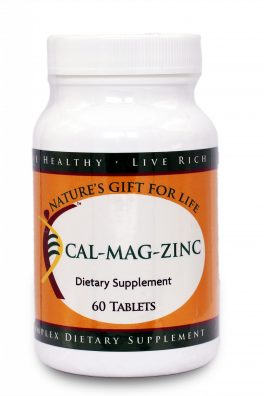 Cal-Mag-Zinc+Vitamin D - 90caps
Cal-Mag-Zinc+Vitamin D - 90caps 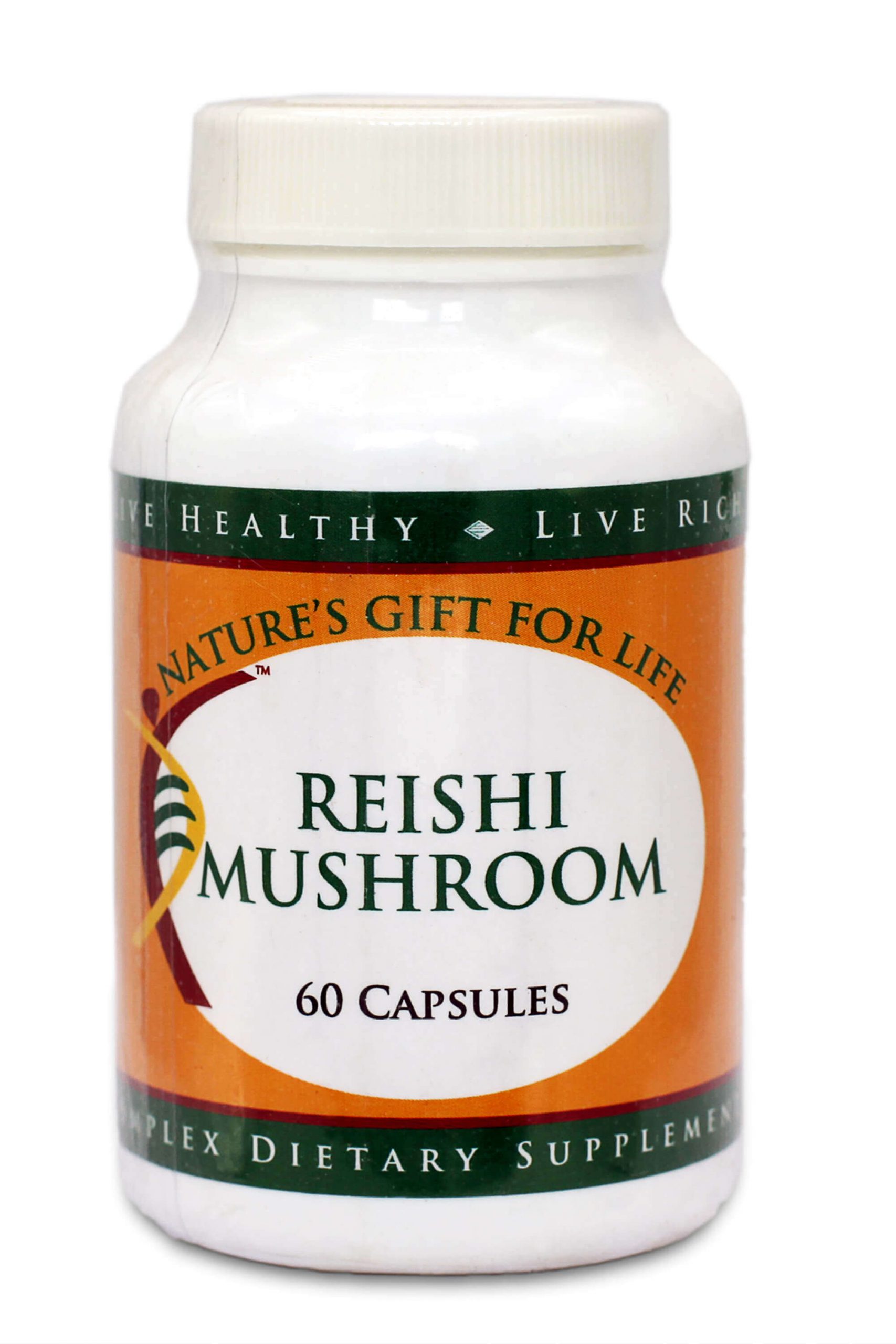
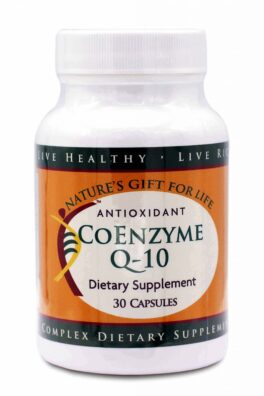
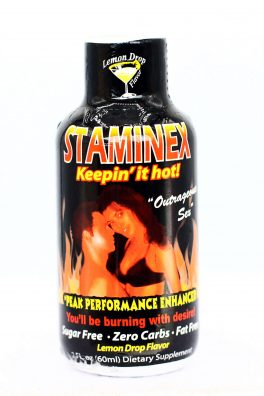
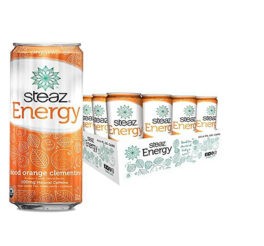
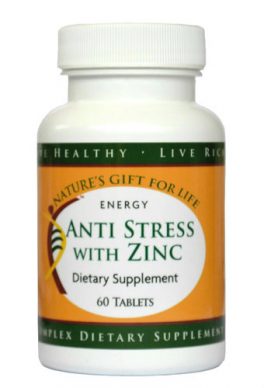
There are no reviews yet.